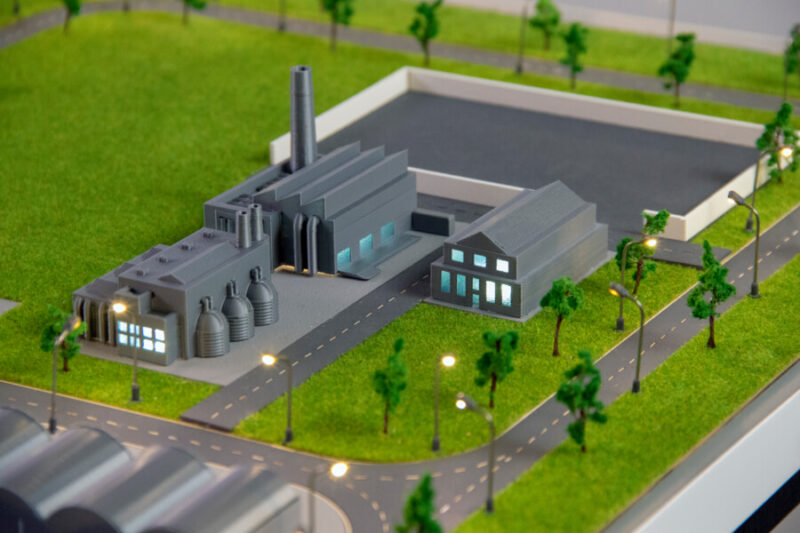In today’s world, environmental concerns and the impact of climate change have become important topics of discussion, particularly online. Many individuals are making small behavioral changes to reduce their carbon footprint and contribute positively to the movement, with recycling being one of the most popular ways to do so.
While individual recycling efforts are important, entrepreneurs and investors are also building waste recycling stations to have a more significant impact on the environment and to generate financial profit.
Creating a waste recycling center can be a challenging project. However, architectural models can be an effective tool for promoting the facility and securing the necessary funds. Although architectural models are commonly used for marketing residential complexes, they can also be utilized for industrial projects such as waste recycling stations.
As a waste recycling station represents a significant investment in terms of both finance and time, proper planning and access to the necessary resources are crucial for success. While a two-dimensional architectural plan can be easily understood, not everyone is capable of visualizing all the details presented. Therefore, an architectural model can aid in presenting each representative element of the project, including buildings, green spaces, parking areas, and offices.
Moreover, installing an LED lighting system can create a more realistic simulation of the facility, especially at night, and emphasize essential areas. Incorporating surrounding elements such as trees and grass can also enhance the representation of the environment and contribute to a modern, clean, and professional design.
In conclusion, waste recycling stations are crucial for maintaining a healthy environment, and architectural models can significantly increase the chances of success by making the project more accessible and understandable to potential investors and stakeholders.

